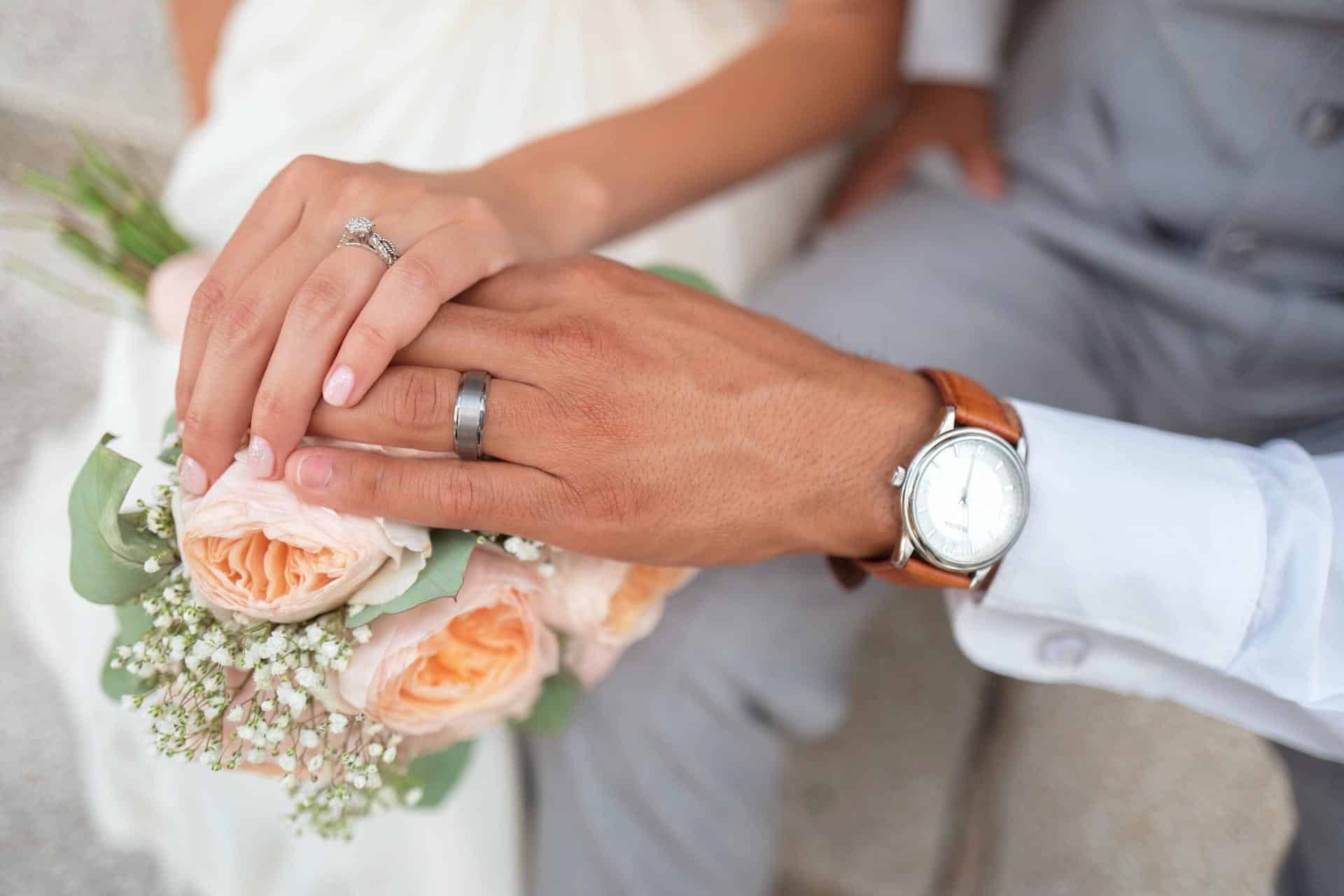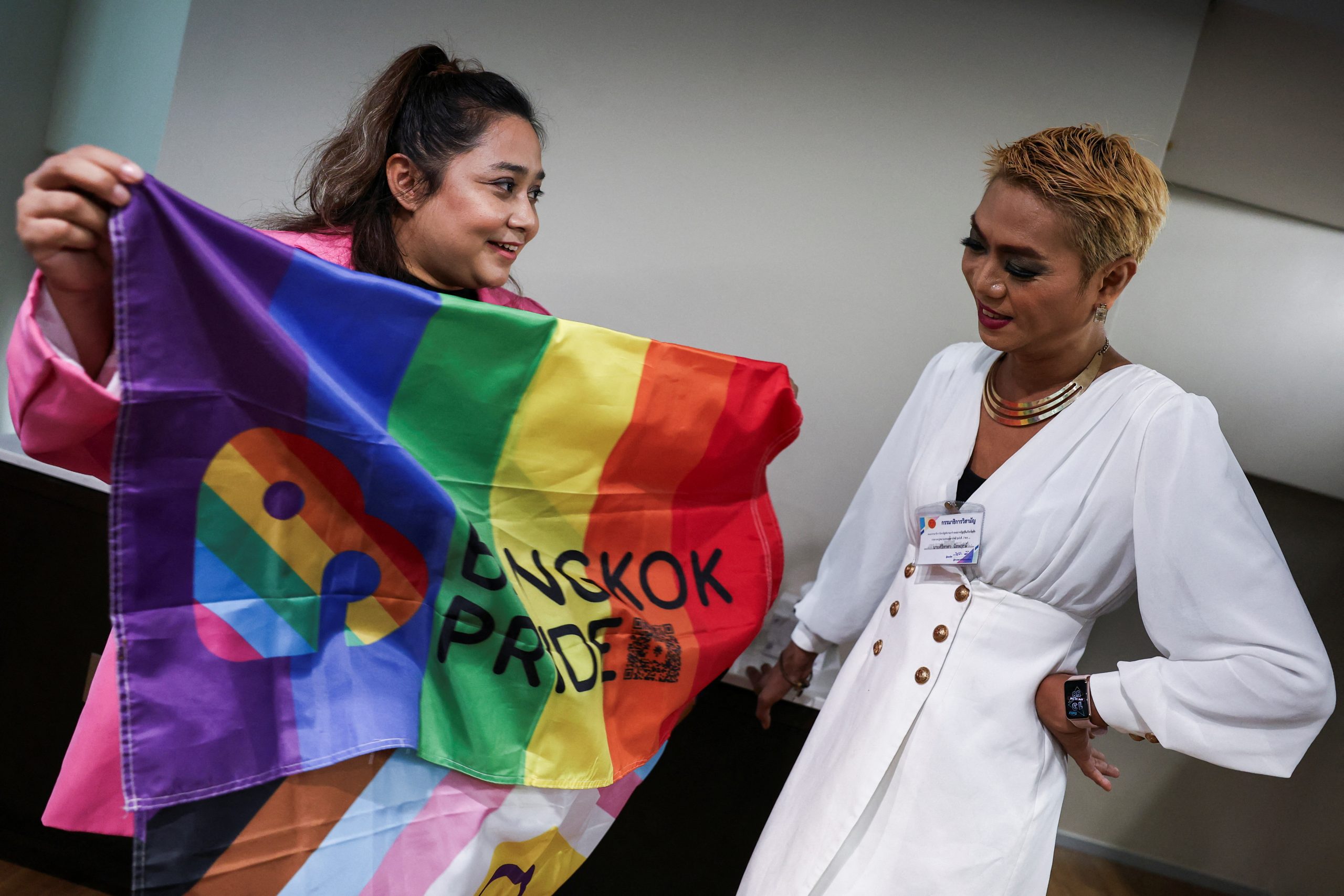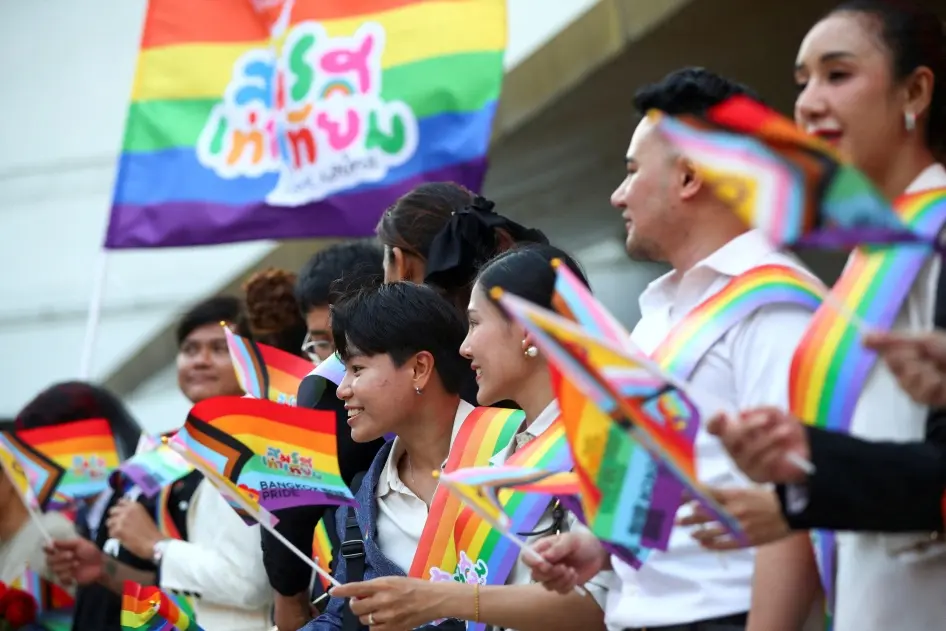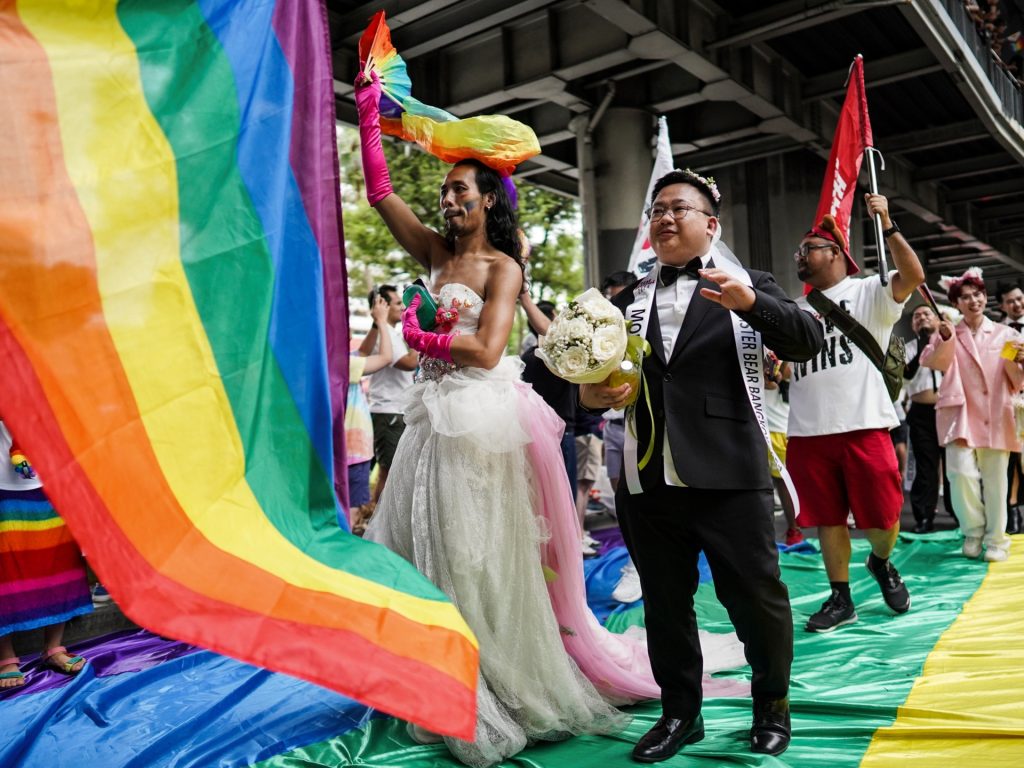Legal
Green Card Marriage Interview Questions: How Can You Pass?

A green Card Marriage Interview is an opportunity for spouses to prove that their marriage is real and not fraudulent.
After you answer different sets of questions about each other, your relationship and other relevant living condition, the immigration authorities’ officer will compare your answers and determine whether you are eligible for the Marriage Green Card.

Photo by Drew Coffman on Unsplash
To have you better prepared for this interview, we’ve gathered examples of commonly asked questions on this interview so you can think them through in time for your appointment.
Let’s take a look at them.
Types of questions you may be asked on your Green Card Marriage Interview
Generally speaking, there are five types or groups of questions you could be asked in your Green Card Marriage interview. Those are the questions regarding:
- Basic information about you and your spouse
- Your familial relationships
- Your relationship with each other
- Your educational background and employment status
- Your medical history
Now, it’s unlikely that you’ll be asked all of them and the ones that your officer does choose will depend on the progression of your interview.
But, to get the gist of what they might be about, let’s take a look at the most common Green Card Marriage interview questions within each of these five groups:
Basic information about you and your spouse
The first group of questions you may be asked concerns the basic information about you and your spouse.
Namely, you two will first be cross-questioned about one another’s personal details. This is done to check whether you have elementary knowledge about each other before delving into deeper topics, such are the details about the progress of your relationship throughout the years.
The questions you two might be asked consist of your:
- Full legal names of you and your spouse (you might also get asked about nicknames you use, whether you had any name changes, when did you have them and what are they)
- Birthplaces and current addresses
- Contact details (e-mail, phone, etc.)
- Questions about migrating to the US (where, when, how, whether you had immigration problems, information about your travel documents, etc.)
Familial information
Next, you’ll be questioned about each other’s family and your relationship with them.
This way, the immigration authorities can check just how entwined your lives are and whether you’ve had enough time to get to know each other.
These questions may be about:
- Your living situation (do you live separately, together, with your families, do you live in an apartment or a house, are you renting or are you the owner, how does your home look, how many rooms does it have, etc.)
- The number of living family members and their names (this usually includes your grandparents, parents, and siblings)
- Your relationships with your families (do they approve of the relationship, how often do you see each other, etc.)
- Your children (do you have or plan any, how many, examples of your individual roles in parenting, your child’s favorite things, etc.)
- Any prior marriage of yours
Information about your relationship
After inquiring about your individual and joined relationships with your families, the officer will likely direct the majority of his attention to the history of your relationship.
They will want to know how your story started, what brought you closer together, as well as where you stand on important topics that couples are expected to discuss before marriage.
This part of your interview may contain questions about the following:
- Where, when, and how did you meet each other
- What made you fall in love with each other
- Your dating life and engagement (where did you go on dates, who made the first move, who proposed, how did they choose the ring)
- Birthdays (when is your spouse’s birthday, how do you spend them, which gifts did you give to each other, etc.)
- What made you decide to get married (common values, favorite things about each other)
- Things you have in common
- Your living situation before marriage
- Honeymoon
- Your religious stances
- Your finances (your annual income, whether you’re on any kind of financial support, the value of your assets, etc.)
- What an ordinary day spent together looks like (your habits and routines, such as who gets up earlier, cooks, cleans, what your favorite activities and hobbies are, where and how you prefer to spend your day, etc.)
- Wedding (date, place, number of invitees, details about the décor, music, food, schedule, highlights, etc.)
- Future plans (regarding children, buying real estate, etc.)
Education and employment
Considering how much time people spend on their jobs and to which extent their careers consume them, it’s no wonder that immigration authorities want to check whether spouses know enough about each other’s employment.
After all, we all spend so much time talking about the things we like or don’t like about our jobs, so a spouse’s knowledge of these matters can be a good indicator of whether a marriage is fraudulent or not.
Besides the questions about employment, a Green Card Marriage interview sometimes also includes questions about your and your spouse’s educational background.
Those questions might include topics such as:
- The school you attended (when and where did you attend high school or university, what is the name of the institution, what did you graduate in, your current level of education)
- Place and type of your employment (including when did you start working for your current employer, your job satisfaction, and other questions alike)
- When do you go to and come back from work
- Your salary
- Your career aspirations
- Your previous jobs
- Periods of unemployment in the past
Medical history
Before granting Green Card, immigration authorities always check whether the applicants have any health conditions that could make them ineligible to migrate to the US.
However, there’s no reason to be nervous about this step of the process, as nobody will deny you based on that 3-day cold you had as a toddler. Just be honest, ‘cause there’s nothing to hide!
To be prepared for the kind of questions you might be asked regarding your medical history, here are some of the examples of health-related inquiries that often occur at Green Card Marriage interviews:
- Have you suffered from any illnesses in the past
- Do you suffer from any illnesses now
- If you did or do, what are those illnesses (are they physical or mental, how serious are they, are they a public health issue)
- Are you fully vaccinated
- Any past and current issues with drugs or alcohol that you have to report
Tips for passing your Green Card Marriage Interview
Still nervous about that interview?
Don’t be. You’ve got nothing to hide and the immigration authorities’ officer is not out there to get you.
If you follow these five simple instructions on how to handle a Green Card Marriage Interview, we’re confident that you’ll pass with flying colors:
- Take the interview seriously: A process of obtaining a Green Card is an important one and you want to show that you perceive it as such. Don’t be late to your interview or show up dressed inappropriately. First impressions matter!
- Prepare: Assuming that you’ve read the exemplary questions from this article in time for your interview, take your time thinking through how to answer them. However, this doesn’t mean that you should memorize your answers by heart. Quite the contrary, that may come off as too rehearsed and insincere. Instead, what you want to do is to have prepared situations to reference in the conversation and then kind of wing it from there on.
- Be honest: In case a question catches you by a surprise, it’s quite okay to show that too and to admit that you haven’t really discussed that specific matter with your spouse. Nobody knows absolutely everything about their partners – and the officer questioning you knows this. Remember, there aren’t any wrong answers, so don’t act sketchy if you can’t think of a perfect one immediately.
- Relax: Here’s the thing – you likely won’t be asked even half of the number of questions listed here. Officers tend to go into detail only when they get suspicious about your marriage, so don’t give them a reason to suspect. Listen carefully to the questions you’re asked, respond calmly and try not to lose track of your thoughts.
- Be respectful: If you start thinking that your interview is taking a wrong turn and panicking because of it, be cautious of how you express your fear. Don’t lash out at the officer or start making assumptions about how they make factor your answers into their decisions. Gather your composure and take one step at a time.
 |
Author Bio:Nicole Kelly is a Raleigh, North Carolina, US graphic designer, digital marketing consultant, and writer enthusiast. She loves writing about new business strategies, digital marketing, and social media trends for different blogs and DigitalStrategyOne. |
|---|
Related CTN News:
Benefits of hiring a Personal Injury Lawyer
International Sim Card for Travel and Other Life Hacks for Passionate Adventurers

Legal
Thai Court Amends Law to Allows Wives to Sue Husband’s Lovers

Thailand’s Constitutional Court has changed the Civil Code will allow women to sue their husbands’ lovers, male or female. The Constitutional Court found on Tuesday that Section 1523 of the Civil Code breached Section 27 of the constitution, which safeguards Thais’ rights and liberties regardless of gender.
The court directed that the verdict be enforced within 360 days.
Section 1523 of the Civil Code states that husbands can sue their wives’ lovers, and wives can sue other women who publicly display an adulterous connection with their husband.
Keirov Kritteeranon, secretary-general of the Office of the Ombudsman, stated that the Ombudsman had previously urged the court to rule on the legality of Section 1523, which allowed wives to suit only female lovers.
Husbands can now sue their wives’ boyfriends regardless of gender, and there was no requirement for any public declaration of an adulterous connection, he claimed.
Once enforced, Tuesday’s Constitutional Court order, according to the Ombudsman, will correct this imbalance.
Thailand Amends Marriage Law
Meanwhile, Thailand is set to become the first Southeast Asian country to recognise same-sex marriage, after its marriage equality law was passed in the Upper House on Tuesday and is now on its approach to being promulgated before going into effect in the coming months.
LGBTQ+ advocates rejoiced as the Senate voted 130-4 to pass the bill on its final reading, with 18 abstentions. They hailed the development as a win in their long struggle for equal rights.
When the advocates who had gathered at parliament on Tuesday to witness the Senate’s final reading and vote on the measure heard the outcome, they burst out in cheers.
They next went to authorities House, where the authorities had planned a celebratory reception for them later in the day. They then went to the Bangkok Art and Culture Centre, where the party lasted until late at night.
Prime Minister Srettha Thavisin, who is on sick leave due to Covid-19, congratulated them via Zoom call from Government House.
The new law will allow any two people aged 18 or older to register their marriage and obtain the same advantages and rights as heterosexual couples. The bill refers to married couples as “two individuals” rather than “a man and a woman,” and changes their legal status from “husband and wife” to “spouses.”
LGBTQ+ people from any country can legally marry in Thailand. When the bill goes into force, foreign same-sex married partners will be eligible for a spousal visa.
The law will be sent to the government for approval before being presented to the monarch.
It will take effect within 120 days of its publication in the Royal Gazette, making Thailand the third Asian country to accept same-sex marriages after Nepal and Taiwan.
Senator Kamnoon Sidhisamarn, spokesman for the Senate’s special committee evaluating the proposed law, called it a victory for equal rights campaigners.
“There is no reason for the Upper House to disagree with the judgement made by the House of Representatives,” he told reporters. He was referring to the legislation’s passage in the Lower House prior to its submission to the Senate for approval.
The battle for same-sex marriage legislation began 23 years ago. Tunyawaj Kamolwongwat, a Move Forward Party list-MP, said that the law’s passage on Tuesday signified the beginning of a new chapter in Thai history.
Source: Bangkok Post
Court Upholds Israel’s Ban on News Agency Al Jazeera
Legal
Thailand’s Senate Passes Landmark Marriage Equity Bill Legalizing Gay Marriage

Thailand’s Senate has approved a long awaited marriage equality bill on Tuesday, making the country the third Asian country to accept same-sex couples. The Senate approved the law 130-4 with 18 abstentions.
The marriage equality bill will be sent the palace for royal clearance. The marriage equality law takes 120 days to take effect after Royal Gazette publication.
LGBTQ+ advocates welcomed the proposal a “monumental step forward” because Thailand would be the first Southeast Asian country to legalise marriage equality. Thailand is popular with travellers due to its LGBTQ+ culture and tolerance.
“This would underscore Thailand’s leadership in the region in promoting human rights and gender equality,” the Civil Society Commission of marriage equality, activists, and LGBTI+ couples said.
Prime Minister Srettha Thavisin, who wore a rainbow shirt to commemorate Pride Month, joined thousands of LGBTQ+ revellers and activists in a Bangkok parade at the start of June.
The prime minister will open Government House to commemorate the bill’s passage. Pride supporters will march from Parliament to the prime minister’s office. Mr. Srettha, who has Covid-19, will join them online after taking several days off.
Deputy Prime Minister and Commerce Minister Phumtham Wechayachai anticipates June’s Pride Month to create approximately 4.5 billion baht in economic cash flow.

Pride Month in Thailand
On Saturday, Mr. Phumtham said the government under Prime Minister Srettha Thavisin is encouraging sexual diversity and working with the commercial sector to plan more Pride Month festivities to attract LGBTQ+ tourists.
He claimed it will increase the country’s trade potential by giving SMEs business expansion chances and adding soft power value.
Mr. Phumtham claimed Poonpong Naiyanapakorn, director-general of the Trade Policy and Strategy Office, told him Pride Month celebrations will make Thailand a “pride-friendly destination” for LGBTQ+ Thai and global consumers.
This would help the country become a regional tourism hub under the government’s “Ignite Tourism Thailand” initiative to enhance tourism in 55 “worth visiting” provinces.
He added that such festivals will support downstream industries like event planners, food and beverage companies, hotels, and transport services and disperse cash to local areas. Mr. Phumtham stated Thailand’s Pride Month began in 1999. Bangkok, Chiang Mai, Phuket, and Chon Buri host parades, festivities, and campaigns.
The Tourism Authority of Thailand (TAT) expects approximately 860,000 people to attend this year’s festival and contribute at least 4.5 billion baht for the economy. LGBT Capital estimates that the world’s LGBTQ+ population has US$4.7 trillion in purchasing power and Thailand’s sexually varied population has US$26 billion.
LGBTQ+ rights in Thailand are improving, but there’s still much to do. The LGBTQ+ community in Thailand is notably strong in Bangkok and Pattaya.
Strong legal recognition allows transgender people to change their names and titles. Many LGBTQ+ couples lack legal rights since same-sex marriage is banned.

LGBTQ+ rights in Thailand
Thailand is becoming more accepting despite these difficulties. LGBTQ+ rights are gaining favour. Activists want legal changes to guarantee equality.
Pride parades are becoming increasingly visible, demonstrating diverse acceptance. While challenges remain, LGBTQ+ rights in Thailand are improving as awareness and acceptance expand.
Legal
Protecting Your Designs: Intellectual Property Rights in the Jewelry Manufacturing Industry

The jewelry manufacturing industry is a vibrant and highly competitive sector where creativity and innovation are paramount. Designers invest significant time, effort, and resources into crafting unique pieces that appeal to consumers’ tastes and preferences. However, this industry faces a persistent challenge: the protection of original designs from imitation and unauthorized use.
Intellectual property rights (IPR) play a crucial role in safeguarding jewellery designs, ensuring that creators receive recognition and financial benefits from their work. This article delves into the various forms of intellectual property rights pertinent to the jewelry manufacturing industry and offers insights on how designers can protect their creations.
Understanding Intellectual Property Rights
Intellectual property rights are legal mechanisms that grant creators exclusive rights to their inventions, designs, and artistic works. These rights encourage innovation by providing creators with the means to control the use of their creations and to benefit financially from them. In the context of jewelry design, the most relevant forms of IPR are copyrights, trademarks, patents, and design rights.
Copyrights
Copyright protection extends to original works of authorship, including artistic creations such as jewelry designs. Under copyright law, the designer of a piece of jewelry automatically acquires the exclusive right to reproduce, distribute, and display the design upon its creation. This protection does not require registration, although registering the copyright with the appropriate governmental body, such as the U.S. Copyright Office, can provide additional legal benefits and evidence of ownership.
For jewelry designers, copyright protects the aesthetic aspects of a piece, such as the specific design, patterns, and artistic expressions. However, it does not cover the functional elements or the materials used. The duration of copyright protection varies by country, but it typically lasts for the life of the creator plus an additional 50 to 70 years.
Trademarks
Trademarks protect symbols, names, logos, and slogans that distinguish goods and services in the marketplace. For jewelry manufacturers, a trademark can cover the brand name, logo, or even a unique product line name.
Registering a trademark with the appropriate authority, such as the United States Patent and Trademark Office (USPTO), provides nationwide protection and the exclusive right to use the mark in connection with the specified goods or services.
A strong trademark helps consumers identify and differentiate a brand’s products from those of competitors, fostering brand loyalty and reducing the risk of confusion in the marketplace. It also provides legal recourse against counterfeiting and unauthorised use of the brand’s identity.
Patents
Patents protect new inventions and technical innovations. In the jewelry industry, this could include innovative manufacturing processes, unique mechanisms for adjustable or interchangeable jewelry, or novel materials and techniques. A patent grants the inventor the exclusive right to use, make, and sell the invention for a limited period, usually 20 years from the filing date of the patent application.
Obtaining a patent involves a rigorous process of proving that the invention is novel, non-obvious, and useful. For jewelry designers, the primary benefit of patent protection lies in safeguarding their innovative techniques and mechanical features, which can provide a competitive edge in the market.
Design Rights
Design rights specifically protect the visual appearance of a product, including its shape, configuration, pattern, and ornamentation. These rights are particularly relevant to the jewelry industry, where the aesthetic appeal of a product is a key selling point. In many jurisdictions, design rights must be registered to be enforceable, though some countries offer unregistered design rights that provide limited protection.
Registering a design right involves submitting detailed representations of the design to the relevant authority, such as the European Union Intellectual Property Office (EUIPO) for protection within the EU. Registered design rights typically offer protection for up to 25 years, subject to renewal fees.
Steps to Protect Jewelry Designs
- Document Your Designs: Maintain detailed records of your design process, including sketches, prototypes, and finished pieces. This documentation can serve as evidence of originality and ownership in case of disputes.
- Conduct Searches: Before launching a new design, conduct thorough searches to ensure it does not infringe on existing intellectual property. This can prevent legal issues and costly disputes.
- Register Your IP: Where applicable, register your copyrights, trademarks, patents, and design rights with the appropriate authorities. Registration enhances protection and provides legal advantages in enforcing your rights.
- Use NDAs and Contracts: When working with manufacturers, suppliers, and collaborators, use non-disclosure agreements (NDAs) and detailed contracts to protect your designs and outline the terms of use. ( Check out EJ: A Jewelry Manufacturer with NDA’s.
- Monitor the Market: Regularly monitor the market for potential infringements. This can involve online searches, attending trade shows, and staying informed about competitors’ activities.
- Take Legal Action if Necessary: If you discover an infringement, take prompt legal action to enforce your rights. This may involve sending cease-and-desist letters, pursuing litigation, or seeking alternative dispute resolution methods.
Challenges and Considerations
While intellectual property rights offer significant protection, there are challenges and limitations to consider. The cost and complexity of obtaining and enforcing IPR can be prohibitive, especially for small designers and startups. Additionally, the global nature of the jewelry market means that protections obtained in one jurisdiction may not be recognized elsewhere, necessitating international strategies for comprehensive protection.
Moreover, the fast-paced nature of fashion and jewelry trends can make lengthy registration processes impractical for certain designs. In such cases, relying on unregistered design rights or focusing on brand protection through trademarks may be more viable strategies.
Conclusion
Intellectual property rights are a vital tool for protecting the creativity and innovation that drive the jewelry manufacturing industry. By understanding and strategically utilizing copyrights, trademarks, patents, and design rights, designers can safeguard their creations, enhance their competitive edge, and ensure they reap the financial rewards of their ingenuity. As the industry continues to evolve, staying informed about IPR and adapting to emerging challenges will be crucial for sustaining success in the dynamic world of jewelry design.
People Also Reading:
Law Firm Chastised for Using OpenAI ChatGPT for Legal Research
Law Firm Chastised for Using OpenAI ChatGPT for Legal Research
-

 News3 years ago
News3 years agoLet’s Know About Ultra High Net Worth Individual
-
Entertainment2 years ago
Mabelle Prior: The Voice of Hope, Resilience, and Diversity Inspiring Generations
-

 Health3 years ago
Health3 years agoHow Much Ivermectin Should You Take?
-

 Tech2 years ago
Tech2 years agoTop Forex Brokers of 2023: Reviews and Analysis for Successful Trading
-

 Lifestyles3 years ago
Lifestyles3 years agoAries Soulmate Signs
-

 Movies2 years ago
Movies2 years agoWhat Should I Do If Disney Plus Keeps Logging Me Out of TV?
-

 Health3 years ago
Health3 years agoCan I Buy Ivermectin Without A Prescription in the USA?
-

 Learning3 years ago
Learning3 years agoVirtual Numbers: What Are They For?